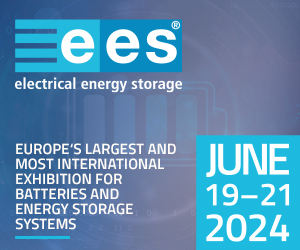How Can We Help?
About Combined Cycle
General
Combined cycle is a term used when a power producing engine or plant employs more than one thermodynamic cycle. Heat engines are only able to use a portion of the energy their fuel generates (usually less than 30%). The remaining heat from combustion is generally wasted. Combining two or more cycles such as the Brayton cycle and Rankine cycle results in improved overall efficiency.
In a combined cycle power plant (CCPP), or combined cycle gas turbine (CCGT) plant, a gas turbine generator generates electricity and the waste heat from the gas turbine is used to make steam to generate additional electricity via a steam turbine; this last step enhances the efficiency of electricity generation. Most new gas power plants are of this type. In a thermal power plant, high-temperature heat as input to the power plant, usually from burning of fuel, is converted to electricity as one of the outputs and low-temperature heat as another output. As a rule, in order to achieve high efficiency, the temperature of the input heat should be as high as possible and the temperature of the output heat as low as possible (see Carnot efficiency). This is achieved by combining the Rankine (steam) and Brayton (gas) thermodynamic cycles. Such an arrangement used for marine propulsion is called COmbined Gas (turbine) And Steam (turbine) (COGAS).
Design principle
In a steam power plant water is the working medium. In this case high pressure has to be employed which leads to bulky components. High cost of special alloys that endure high temperature limit practical steam temperature to 655°C. For compact gas turbines this limitation does not apply and gas cycle firing temperature in excess of 1,200°C is practicable. In the combined cycle plant the thermodynamic working cycle is operated between the high firing temperature and the ambient temperature at which low temperature waste heat can be disposed.
In a gas turbine set, composed primarily of a compressor, burner and the gas turbine proper, the input temperature to the gas turbine is relatively high (some 900°C to 1,350°C) but the output temperature of the flue gas is also relatively high (some 450°C to 650°C). Flue gas temperature is sufficient for production of steam in the second, steam cycle (Rankine cycle), with live steam temperature in the range of 420°C to 580°C. The lowest temperature of the steam cycle depends on the ambient temperature and the method of waste heat disposal, either by direct cooling by lake, river or sea water, or using cooling towers. Therefore, by combining both processes, high input temperatures and low output temperatures can be achieved and the power plant efficiency can be increased.
The output heat of the gas turbine flue gas is utilized to generate steam by passing it through a heat recovery steam generator (HRSG) and therefore is used as input heat to the steam turbine power plant.
Efficiency of CCGT plants
The thermal efficiency of a combined cycle power plant is normally in terms of the net power output of the plant as a percentage of the lower heating value (LHV) or net calorific value (NCV) of the fuel. In the case of generating only electricity, power plant efficiencies of up to 59% can be achieved. In the case of combined heat and power generation, the efficiency can increase to about 85%.
Supplementary firing
The HRSG can be designed with supplementary firing of fuel after the gas turbine in order to increase the quantity or temperature of the steam generated. Without supplementary firing, the efficiency of the combined cycle power plant is higher, however supplementary firing allows the plant to respond to fluctuations of electrical load. Supplementary burners are also called duct burners.
Supplementary firing is possible because turbine exhaust gas (flue gas) contains considerable fraction of unused oxygen. Due to temperature limitation at the gas turbine inlet, excess air, above the optimal stochiometric ratio is used. Often in gas turbine designs part of the compressed air flow bypasses the burner and is used for cooling of the turbine blades.
Integrated Gasification Combined Cycle (IGCC)
Syngas is produced in a gasification unit built for Combined Cycle purposes, hence name Integrated. Steam generated by waste heat boilers of the gasification process is utilized to help power steam turbines. Heavy petroleum residues and coal with high sulfur content and even biomass are possible feeds (raw material) for gasification process. There are only a handful of IGCC plants in operation to date for power generation. The first generation of IGCC plants were characterised by environmental performance significantly ahead of other coal-based technology of the time. Subsequent developments in emission abatement from ‘conventional’ technologies have largely eliminated this differential. IGCC is now considered desirable since it may offer the lowest cost long-term option for the reduction of carbon dioxide emissions (through capture and storage). The main inhibiting factor for IGCC is high capital cost, upwards of $1400/kW. The key drivers to ensure long-term implementation of the technology are cost reduction and reliability improvement.
The DOE Clean Coal Demonstration Project facilitated the construction of 3 IGCC plants. One (Wabash River) in Indiana, another (Polk) in Tampa, Florida (online 1996), and the other (Pinon Pine) in Reno, Nevada. In the Reno demonstration project, researchers found an inherent problem with the design of IGCC technology available at that time such that it would not work above 300 feet from sea level elevations. [Source: Joe Lucas, Executive Director of Americans for Balanced Energy Choices, as interviewed on NPR’s Science Friday, Friday May 12, 2006]
The power generation industry also is yet to be convinced about the reliability of IGCC technology as the five demonstration facilities that have gone into operation have not consistently demonstrated availabilities comparable to conventional CCGTs or coal-fired power plants.
There are several refinery-based IGCC plants in Europe that have demonstrated good availability performance after initial shakedown periods. Availability in the range of 90%-95% is now consistently being achieved. Several factors are common to these plants that may be contributing to this good performance. For one, none of them use advanced technology gas turbines, but, rather, so-called E technology has been employed. This has avoided the problems of those plants that used F technology, mostly of one manufacturer, that continue to be a source of downtime.
Second, all refinery-based plants use refinery residues, rather than coal, as the feedstock. This eliminates at least a minor availability detractor in that there is no coal handling and coal preparation, and there is a much lower level of ash to take care of in the raw gas cooling and cleanup train.
Third, these non-utility plants have recognized the need to treat the gasification system as the up-front chemical processing plant that it is and have generally reorganized their operating staff accordingly.
Another IGCC success story has been the 250 MW Buggenum plant in The Netherlands that is also demonstrating good availability. The coal-based IGCC plant is currently using about 30% biomass as a supplemental feedstock, for which the owner, NUON, is paid an incentive fee by the government. NUON is planning to build a much larger plant – of about 1200 MW for which siting has begun. Although not confirmed, it is expected that they will specify E class gas turbines, the same as being used in the existing plant, to avoid gas turbine reliability issues.
A new tranche of IGCC-based coal-fired power plants are proposed although none is yet under construction. Projects are being developed by AEP, Duke and Southern Company in the US and, in Europe, by E.ON and Centrica (both UK), RWE (Germany) and NUON (Netherlands).







